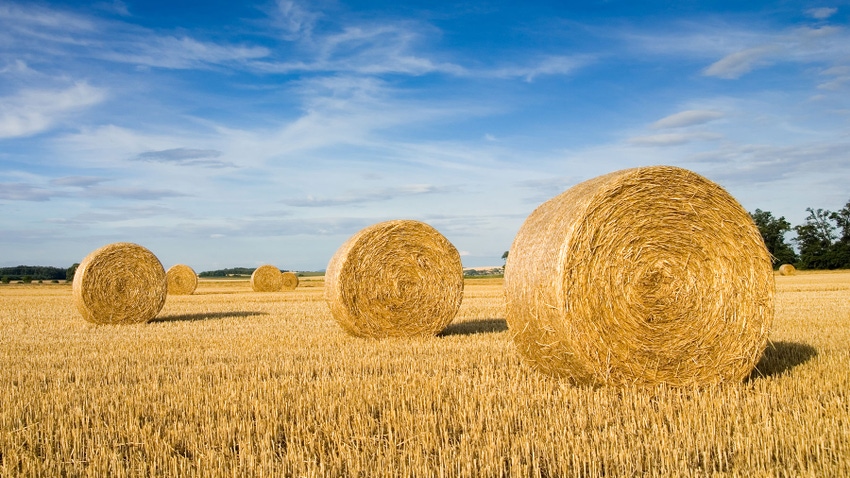
Limited grass and hay have livestock producers looking for alternative forage options. Gene Schmitz, University of Missouri Extension livestock specialist, says you may want to consider ammoniated wheat straw.
Adding anhydrous ammonia to wheat straw improves nutritional value and makes it a viable forage option during drought. So, whether you are trying it for the first time or need a refresher, Schmitz breaks down the process for round bales:
Harvest, then treat. For the process to be successful, Schmitz says straw needs to be baled and treated soon after grain harvest.
Weigh bales. Farmers need to know an average bale weight as it is used to calculate the amount of anhydrous ammonia required for treatment.
Stack tight. Two bottom rows of 13 bales and one top row of 12 bales works well — 38 per stack. Place it in an area with good airflow. Gravel keeps moisture from wicking up from the ground.
Cover bales. Schmitz suggests using either 6 or 8 mil black or clear UV-resistant plastic sheets to cover the stack. “A 40-foot-by-100-foot sheet of plastic will completely cover 38 round bales of straw,” he says.
Seal sides. Seal the sides of the plastic against the ground with dirt, waste lime or other heavy material. “Enough fill should be placed on the plastic to keep it from being pulled loose by winds and ballooning when the ammonia gas fills the covered stack,” Schmitz notes.
Calculate NH3 needs. Anhydrous ammonia (NH3) is applied at a rate of 60 pounds per ton of wheat straw. Calculating the weight of 38 straw bales under cover, you can purchase the right amount of anhydrous ammonia.
Apply anhydrous. This is a slow process. Insert a pipe or hose under the plastic and into the stack as central as possible. Then apply the ammonia slowly — roughly three to five hours — to the center of the stack.
Wait to feed. Schmitz says farmers should keep the wheat straw pile covered until two to three weeks before feeding. Then open the ends of the stack, allowing it to air out, but don’t keep it open. “The pile must remain covered to maintain forage quality of the treated straw,” he adds. Consider removing several bales from the pile a few days before feeding for extra time to air out.
A warning
Schmitz says toxicity can occur in animals when some forages are ammoniated, so only treat low-quality forages such as wheat straw or fescue stubble following seed harvest.
He adds that if toxicity issues occur, avoid working the cattle and remove ammoniated hay from the diet for several days. “A mixture of 50% ammoniated hay and 50% untreated hay should eliminate any problems.”

SEALED UP: Wheat straw should be sealed up under a tarp before injecting with anhydrous ammonia.
Still, Schmitz says farmers should work with a nutritional consultant to develop feeding programs that include ammoniated wheat straw. If you have questions regarding the process or feeding, call Schmitz at 660-827-0591 or email [email protected].
Practice safety around NH3
Anhydrous ammonia poses risks for farmers.
Because NH3 contains little or no water it seeks out moisture, be it from soil or your eyes, throat, lungs or skin. So, safety when working with anhydrous ammonia is of the utmost concern.
Schmitz offers seven safety rules for working with anhydrous ammonia:
Wear goggles, rubber gloves and protective clothing.
Work upwind when releasing ammonia.
Have fresh water available to wash off any anhydrous ammonia that comes in contact with the skin.
Check all valves, hoses and tanks for leaks.
Check the plastic cover for leaks and patch with duct tape.
Do not smoke near anhydrous ammonia.
Keep children away from treatment area.
About the Author(s)
You May Also Like






